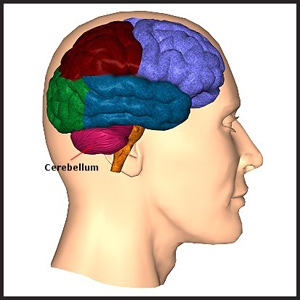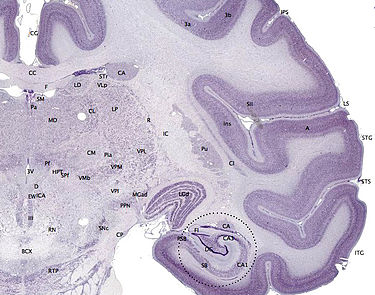The human brain is comprised of three major sections, the cerebellum, the limbic system and the cerebral cortex.

The cerebellum is described as “reptilian.” This section of the brain oversees basic motor functions such balance, coordination of movement and motor learning. (1)

The Limbic System is the emotional brain. This region includes the limbic system, the hypothalamus, the hippocampus and the amygdala.

depicted in dark violet.
http://en.wikipedia.org/wiki/Cerebral_cortex
The cerebral cortex is where consciousness and higher thoughts reside, particularly in the regions of the frontal lobes (3). The only part of the human brain that is free from sensory processing is found here as well, in the prefrontal cortex (3). The language areas are found in the back of the prefrontal cortex as well as the areas that control spatial reasoning and those in charge of executive function. (3). The conscious mind needs all of the regions of the cerebral cortex to work in concert evenly across this section in order to support effective rational thought (3).
Additional Information:
Human Brain Anatomy
Sources
- Chapter 5: Cerebellum. In: Knierim J, author. Neuroscience online : an electronic textbook for the neurosciences. An open-access educational resource provided by the Department of Neurobiology and Anatomy at the University of texas Medical School at Houston [Internet]. Houston (TX): UT; 1997 [cited 2015 Feb 20]. Available from: http://neuroscience.uth.tmc.edu/s3/chapter05.html
- Austin D. Killing them Softly: Neuroscience Reveals how brain cells die from law school stress and how neural self-hacking can optimize cognitive performance. Loyola Law Rev. 2013;59(4):791-859).
- Carter R. Mapping the Mind. Berkeley: University of California Press; 1998.